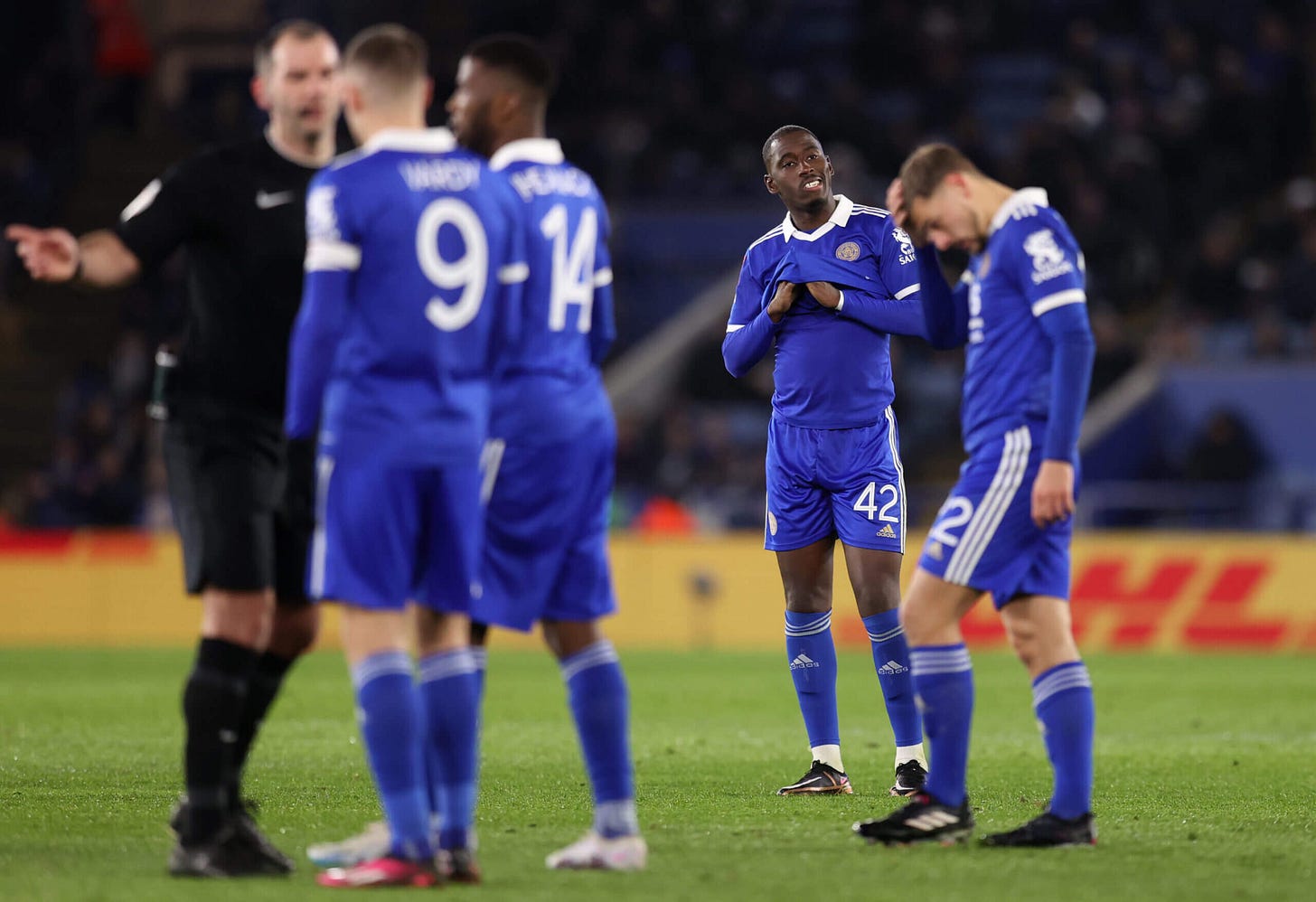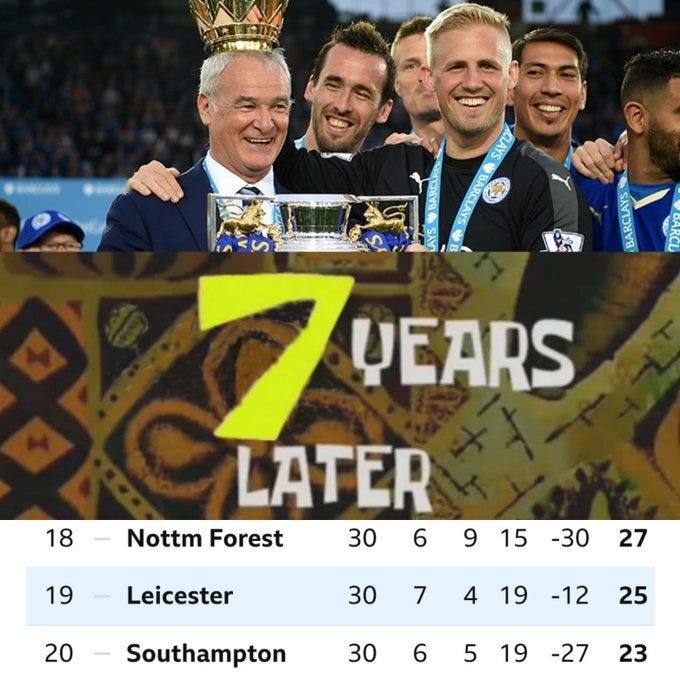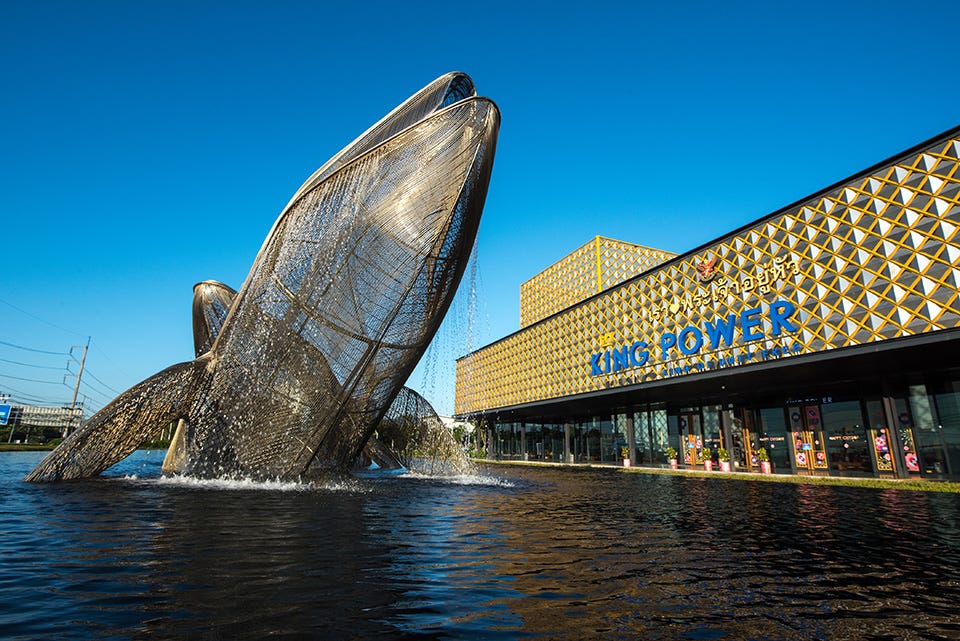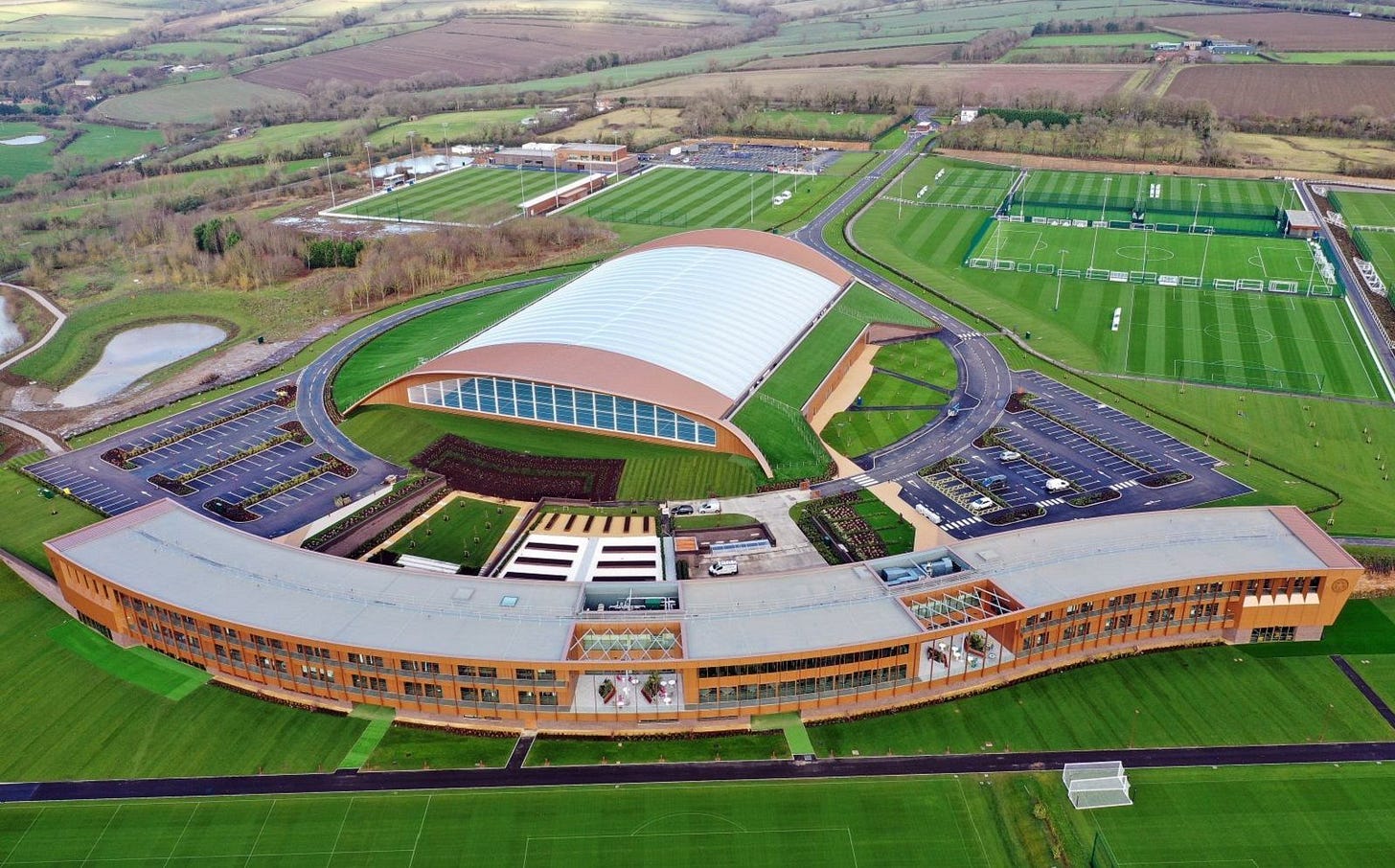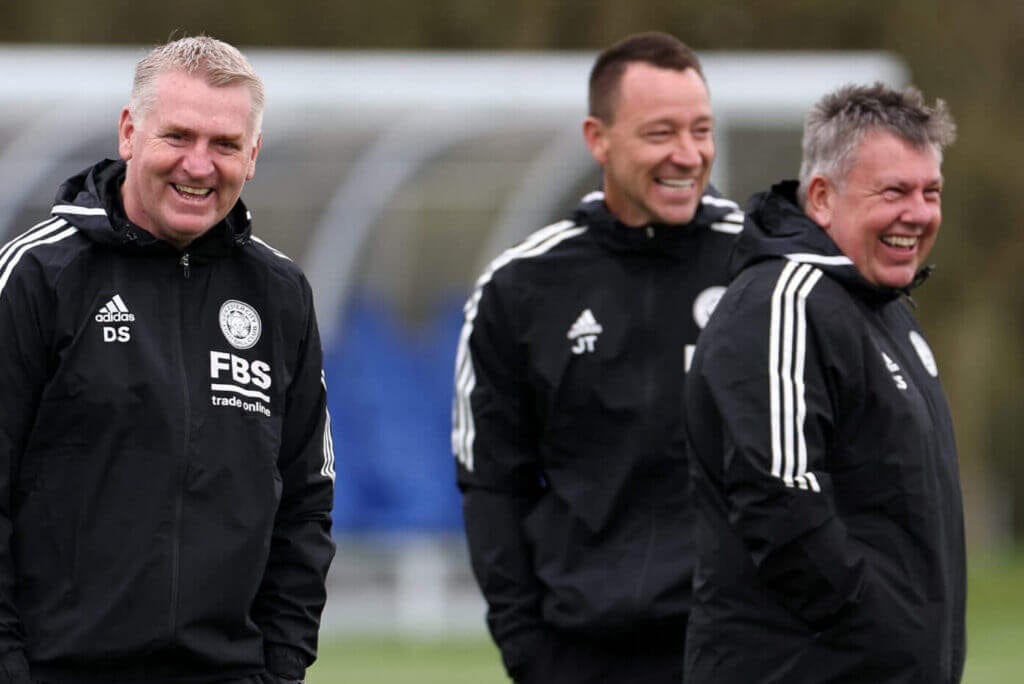From "Unbelievables" to "unbelievable..."
The decline of the Foxes has been sudden, but preventable. Just 7 years on from their domestic triumph, they now face into the abyss of relegation.
Just a few years ago, Leicester City were the darlings of the Premier League.
2015/16 was a Footballing Fairytale. 5,000-1 odds at the beginning of the season, a squad that had been worth just £28.8 million, with a manager who had never won a top division title, “The Unbelievables”, as they were dubbed, came out as the unequivocal best team in English football.
Now, 7 years on (at the time of writing), Leicester sit in 19th place, on the brink of relegation, with 1 win and 1 draw in their last 10 games.
*RECORD SCRATCH*
*FREEZE FRAME*
Yeah, that’s Leicester City. You may be wondering how they got here.
The Finances
I know it’s the boring way to start this piece off, and I know seeing the words I’m about to write are going to trigger strong emotions inside of you. I’m sorry, but I wouldn’t be doing it unless it was absolutely essential.
The role that the COVID-19 pandemic has played in Leicester’s decline cannot be overestimated.
Leicester had been ambitious. They wanted to sustain a challenge for European qualification, push for trophies and disrupt the Premier League’s established ‘Big Six’, who all had considerably greater financial resources than they did.
They had invested in a squad of young, hungry players and, to ward off the ‘Big Six’ from cherry-picking their best talents, had begun offering longer and more lucrative contracts.
Leicester were also spending more on transfer fees — nearly £40million committed on signing Youri Tielemans and £30million for Ayoze Perez in Rodgers’ first transfer window in the summer of 2019. They spent another £35million on Wesley Fofana a year later.
It had also cost them to attract Rodgers and his staff from Celtic in February 2019, at which point work had already begun on their new lavish £100million training complex at Seagrave in north Leicestershire. Plans were also drawn up for a massive stadium expansion project.
Leicester were heavily committed financially, with several loans taken out from parent company King Power and Australian bank Macquarie in support of their ambitions. They were making a loss and debts were rising, but it was manageable. It was all under control.
And then COVID-19 hit.
Matchday revenue, which accounts for around 10 per cent of the club’s revenue, was decimated; and a rebate was due to the Premier League’s broadcasters because they had no matches to show with the season on pause and so the usual prize money was lost when they won the following season’s FA Cup.
It had a huge impact on the team’s ownership group, King Power, which draws its income from a tourism industry that was severely impacted by the pandemic. With the monopoly on Duty Free sales in its native Thailand, hotels and other ventures reliant on holidaymakers. King Power International’s turnover fell from £2.3billion in 2019 to £448million in 2021.
According to leading business journal Forbes, chairman Aiyawatt Srivaddhanaprabha’s personal wealth has fallen by around two-thirds from $5.9billion in 2019 to $1.7bn.
All clubs were affected by the pandemic but the timing of it, as Leicester were starting to stretch themselves more with investment and the nature of their ownership model, which the club have become reliant on as a safety net, meant they were more vulnerable than others.
The fallout from the pandemic is still being felt, the club recently announcing record losses of £92.5million for the 2021-22 season.
Maintaining a challenge in the top half of the Premier League is an expensive business. In 2019, Leicester’s wages to revenue ratio was 68.6% (revenue £178.4m, wages £122.4m). Revenue has grown to £215m, seventh-most in the division, but they spent £182million on wages alone last season. That’s a ratio of 83.5%. UEFA say that a team is facing serious issues when that ratio reaches 70%.
So yeah. Not good…
And that’s before even thinking about how that revenue will start to look if they get relegated…
The Recruitment
Leicester’s approach of selling one key asset every summer and reinvesting the proceeds wisely in young, up-and-coming talent had been held up as a method other clubs wanted to copy.
That model really flourished following Leicester’s shock Premier League title success seven years ago with the sales of Kante, Drinkwater, Mahrez, Maguire and Chilwell bringing in over £255 million between 2016-20, the last two departing just after Rodgers took charge. Those fees were reinvested into the squad in full.
The COVID-19 factor came into play in the summer of 2021 when Leicester didn’t sell an asset, mainly due to concerns the financial impact of the pandemic would mean they wouldn’t get their full valuation for a key player. They decided to hold firm but still backed Rodgers with a record net investment of £55million.
Ayoze Perez was the first signing of that window, followed through the door by Youri Tielemans, James Justin and Dennis Praet. The next summer it was Timothy Castagne, Wesley Fofana – on whom they doubled their investment when he went to Chelsea this January — and Cengiz Under.
While the buy-up-and-comers-cheaply policy was largely adhered to and continued in 2021 with the arrivals of Patson Daka, Ademola Lookman and Boubakary Soumare, the signings of Jannik Vestergaard and Ryan Bertrand that summer were a departure as Rodgers looked for more ready-to-go additions, following a similar pattern to the latter stages of his Liverpool tenure from 2012-15.
Vestergaard, for £14million has been a disastrous signing, clearly being a wrong fit from the start, despite Rodgers suggesting he wasn’t and having tracked him for 18 months.
Leicester’s increased spend on wages, coupled with their lower revenue, meant last summer Rodgers faced the reality of having to sell to buy because of financial fair play (FFP) restraints.
Many mistakes were made in this window. Truly idiotic mistakes that cannot be defended. Selling goalkeeper and captain Kasper Schmeichel was motivated by getting one of their highest-paid players off the books to help ease FFP concerns, but with no adequate replacement lined up to come in? Shambolic.
Schmeichel wanted to stay but a contract offer was slow coming. Rodgers said the Denmark international wanted to take on a new challenge after 11 years with the club. When Ligue 1 side Nice offered him a three-year contract, Leicester didn’t resist, and they received only £1 million for their captain.
With the shackles on in terms of spending until a major asset left, Danny Ward was given a run in the team after four years as the club’s little-used backup. The experiment hasn’t worked with the club conceding 51 goals, the third-most in the Premier League this season, and Ward eventually being replaced by Daniel Iversen.
By the time Wesley Fofana moved to Chelsea for £70million at the end of August, the priority had turned to replacing him in central defence. Wout Faes arrived from French club Reims for £15million on deadline day.
No starting calibre goalkeeper arrived at any point.
Leicester also tried to borrow Atalanta winger Jeremie Boga after not signing last season’s loan success, Ademola Lookman, for £14million because of their FFP concerns. Atalanta signed Lookman, who then replaced Boga in their starting line-up.
The irony! I’m truly sorry, but, the absolute hilarity!
In January they tried to make up ground, bringing in Australian World Cup star Harry Souttar and Danish full back Victor Kristiansen, plus Kenny Tete on loan from Shakhtar Donetsk. Still no goalkeeper.
Rodgers had seemed to take on a more hands-on role over recruitment as his reign progressed. Some of the club’s recruitment staff became exasperated at the change in approach and felt their tried and proven processes were being ignored. Some chose to leave.
Clubs of Leicester’s stature can’t afford to get their player recruitment wrong because they don’t have the finances to throw more money at the problem if the original moves don’t go well. It’s clear that under the leadership of Rodgers, the typical care that went into these signings had been thrown out the window.
Leicester’s senior squad includes seven players who could leave this summer as free agents once their contracts expire (Soyuncu, Bertrand, Perez, Tielemans, Mendy, Amartey, and their captain, Jonny Evans) and seven who’ll then be entering the final year of their deals (Vardy, Maddison, Ndidi, Iheanacho, Thomas, Praet, Vestergaard).
Some have had talks about re-signing but are not expected to do so (Can you blame them?). Some are coming to the end of their time at the club and others are natural wastage Leicester have been unable to get off their books.
This all adds up to a major recruitment drive to reshape the squad over the next 18 months. Yes, there is also an opportunity to reduce the wage bill, but the money required for all the new signings required is going to be significant and so much depends on what division they find themselves in.
Leicester are in a position where a group of players they spent over £110million to acquire are going to be able to leave for nothing at the end of this season unless something changes, and it doesn’t seem likely that anything will.
The team could have easily recouped a large portion of that money by moving on the likes of Tielemans and Soyuncu at the peak of their transfer value, but they veered away from the plan. They got greedy, and it’s cost them big time.
Team Culture and Style
Rodgers is a manager committed to his football philosophy and it initially served him well. The patient build-up from the back, progressive passing through the lines and the high-intensity pressing game worked in his first couple of years when played at a quick tempo. Their game plan was largely dependent on fitness, energy and pressing.
When he had his first-choice line-up fit, Leicester were a potent force — most notably in a 9-0 win at Southampton in October 2019 and a 5-2 victory away to Manchester City 11 months later. But his squad struggled with the intense workload as the Prem played catch-up after the pandemic and with the World Cup on the horizon.
Injuries have hit Leicester hard in the aftermath. This is something that, normally, you can’t blame on anyone. The bug hits every team. But with Leicester, some blame has to fall at the feet of their now former manager.
Rodgers’ was hit by a random desire (*place Randy Orton “I Hear Voices” meme here*) to restructure the medical department and release head physio Dave Rennie in 2020. This was a hugely controversial decision and while the change in personnel can’t be directly or wholly attributed to the club’s injury woes, there can be no question their previously excellent record under Rennie dramatically disappeared. You have to argue that corellation implies causation here.
Some also believe the move to the new training ground at Seagrave has actually had a detrimental effect on camaraderie. Several sources have told The Athletic that Leicester have lost the close, family-like bond they enjoyed at their previous Belvoir Drive base, where all players and staff were in close proximity in its tight corridors and cosy environment. Then-manager Nigel Pearson used that atmosphere to foster a bubble, an “us against the world” attitude, especially during the great-escape season of 2014-15 that saw Leicester somehow stave off relegation.
Rodgers took steps to try to recreate the closeness of Belvoir Drive, having square tables installed in the canteen so players could sit opposite each other to interact, banning mobile phones while they ate, dispensing with table-waiting so they had to clear away their own plates and cutlery and introducing a lounge area nearby where the players could relax after training.
To track Leicester’s decline under Rodgers, in a recent piece written by Rob Tanner of The Athletic, FiveThirtyEight’s Soccer Power Index (SPI) estimated the team’s overall strength between zero and 100 — using difficulty-adjusted match results and underlying performance metrics to model a team’s offensive and defensive strength.
Leicester’s most recent performance peak occurred at the start of December 2019 (SPI rating: 84.5), as they sat second in the Premier League, behind only eventual title winners Liverpool and on track for a Champions League finish. What followed was a slide in form which resulted in them coming fifth that season — good enough for their Europa League qualification as the outlook remained positive at the King Power.
Since then, Rodgers oversaw a decline in results, performances and Leicester’s standing in the league.
Many of his players privately stated that they wanted him to mix it up, to go more direct at times, to get the ball forward quicker for the likes of Iheanacho, Vardy and Daka, who were being asked to do things beyond their skill sets.
Over time, Leicester’s bravery on the ball has dwindled — especially at home, where the atmosphere grew tenser as the crowd grew frustrated with the laboured approach. It is no coincidence they have won only three and lost eight of their 14 league matches at the King Power this season and have claimed more points in away games (13), where there is less expectation, than at home (12).
Yet a stubborn Brendan Rodgers refused to refresh his approach, instead choosing to blame the players for the lack of impact. He chopped and changed like a man possessed, and all it did was heighten the storm swirling around the club.
The (now former) Manager
Rodgers had an incredible impact when he first arrived as Claude Puel’s successor.
When they decided to invest heavily to secure his services, the club believed they were getting an elite manager. Rodgers sold himself and his philosophy to the owners, the players, the club staff and the fans and the evidence to back him up was there in the results on the pitch. There was a huge and consistent bounce that led to unprecedented and consistent success, culminating in that FA Cup final win and two fifth-place finishes.
But this was also tempered with disappointments, such as the inability to hold on and secure Champions League qualification two seasons running (albeit Leicester were never expected to achieve such a lofty goal) and the failure to advance from the Europa League group stage last season. Expectations rose, albeit unrealistically at times, but Leicester struggled to sustain them.
Nonetheless, Rodgers was handed a new contract during his first full season and afforded more autonomy in club matters, but as results started to become more mixed he started to lose his mystique, not just with an increasingly divided fanbase, but among some staff at the training ground and even within the squad — especially after he publicly criticised some of them and suggested they weren’t top players.
As results and performances got worse, some players became disillusioned and grew disconnected. Naturally, there was a contrast within the squad between those cast aside, such as defenders Soyuncu and Vestergaard, and those who seemed on their way out only to be pulled back in again, including Praet and Mendy. Then there were those grateful to Rodgers, like Maddison, whose career has rocketed over the past 18 months.
However, while he progressed, many of his team-mates regressed in the final stages of the Rodgers era. The regression of key players is also mystifying. Some of these such as Ricardo Pereira were admittedly due to injury. Even so, Brendan Rodgers inherited one of the most talented Leicester squads ever and whilst he did bring success, he is also accountable for its ruin. Players such as Wilfried Ndidi and Caglar Soyuncu look like shadows of their former selves. The extent to which Brendan is directly responsible is up for debate, nevertheless, he must take some share of the blame, especially for the latter.
By the end of the Northern Irishman’s time in charge, some of the squad had switched off in the knowledge they would be moving on this summer, some were coming to the end of their careers and some had lost faith in what they were being asked to do — even those who were playing consistently.
Rodgers called for a squad refresh because he could see all this happening in front of him. When he didn’t get it, he projected the air of a manager who was unhappy with his situation and wanted to move on himself.
He revealed he had rejected two attempts to entice him away during his time at Leicester, believed to have come from Arsenal and then Newcastle. In hindsight, he may regret not jumping ship when he had the chance.
There have been great achievements during Rodgers’ four years and he will go down as one of the club’s most successful managers, but there is no question Leicester are in a worse situation now than when he arrived.
What comes next?
The managerial roles have already been filled. Initially Leicester intended to pursue former Leeds United manager Jesse Marsch, in an attempt to fill the role for the long-term. Marsch, however, made it clear he had no intention of taking up a job before the summer, so The Foxes were forced to move on.
Facing down the barrel of relegation, Leicester seem to have been forced into dealing with whatever they could get, in the form of
Dean Smith: 52-year-old manager who has taken charge of 597 senior games at four clubs across the EFL and the Premier League, most recently Aston Villa and Norwich City.
John Terry: 42-year-old former captain of Chelsea and England, assistant coach to Smith at Aston Villa.
Craig Shakespeare: 59-year-old coach, starting his third spell with Leicester. Shakespeare brings a vast knowledge of the club and a connection with the fans.
The trio have already set to work preparing for the challenge of guiding Leicester out of the mire and towards Premier League survival, and make no mistake, this will be a challenge.
The new management team will have to look to the failures of their predecessor in order to determine how best to avoid relegation and possibly keep their jobs going into next season. They’ll need to be flexible in their tactical set ups, devising plans for every team that they’re about to face, but those plans also need to play into the strengths of their most important players.
Expect them to sit deep and break out on the counter with their pacy forwards whenever possible. They have the players, even with some still out injured, the focus needs to now be on giving those players the best opportunity to play to their abilities.
With 3 of the top 8 teams to face in their last 8 games, things are not looking good for the forseeable future. At the moment they’re set to become the joint 5th fastest relegated league champions since World War II. Should Leicester be relegated, it would be a miracle to see them rebound back into the Premier League in a year’s time. They’ll lose over £100m in revenue from the drop alone, and once you factor in all of the players they will have to get rid of to survive the drop financially, this Leicester team will look a shell of its former self.
Such a decline highlights how fortunes outside the top six can change in a heartbeat. All it took for the Foxes was one season of failed recruitment, exacerbated by financial mismanagement.
Whatever happens, whoever gets to have the managerial post next, Leicester City face a monumental job to get back on track. The cliché is as old as the hills, but Leicester City have 8 cup finals left, starting with reigning champions Manchester City, the day this article has been posted (15/04/2023).
Best of luck to them.


